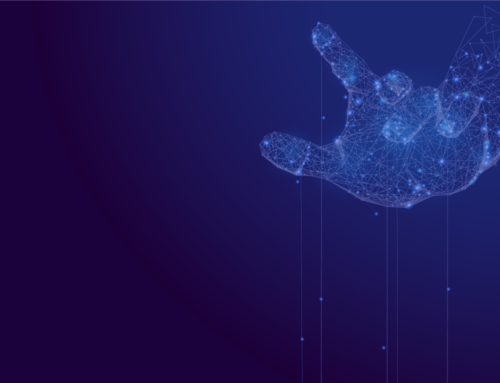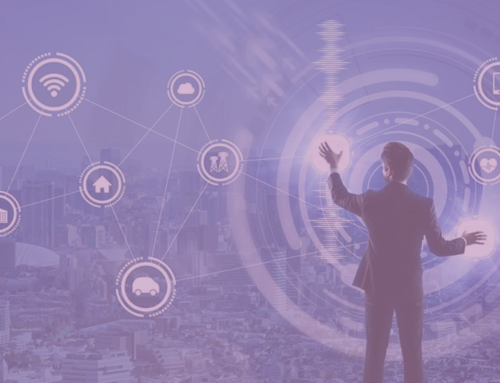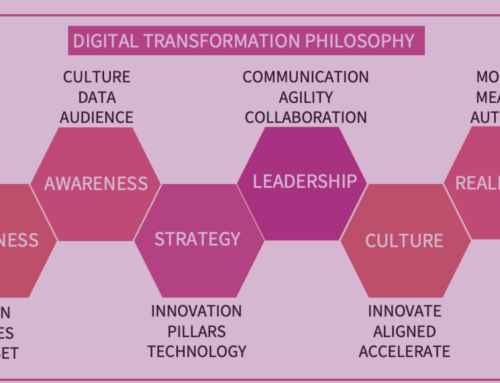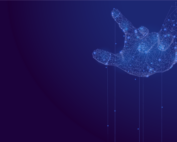As we move further away from 2022, and deeper into 2023, the year of Digital Superheroes, the digital leaders that create the spark that leads to continuous change.
We’re also seeing an acceleration in what I call the three digital waves, with the divides inside waves becoming deeper, and between organisations getting wider.
I said this to someone the other day, and they looked at me and said, “What exactly do you mean by that, Warren?”
What are digital waves?
When you think about change, when you really think about it, one of the aspects that strikes you is that changes never happen singly or in isolation. Change is constant, change is multiple, and change is personal.
Every individual facing a change has a different way of looking at it. Some relish change, others hate it. Some find it easy or exhilarating, whilst others find the prospect of change incredibly uncomfortable. How people approach change will depend on their context, circumstances, fears and ambitions.
That’s why tradition, top-down approaches to change management often don’t work.
- Approaching change as a one-off ‘do it then it’s done’ scenario fails to recognise that it’s constant and ongoing
- The speed and depth of change is individual to each person involved. It’s a curve, not a straight line.
- A linear, top-down approach doesn’t recognise different approaches, responses and timings at different levels of an organisation.
The 3 Waves
That’s why I prefer to see change as a wave. Three types of wave, in fact, each with a different focus and achieving different outcomes.
The Developing Wave
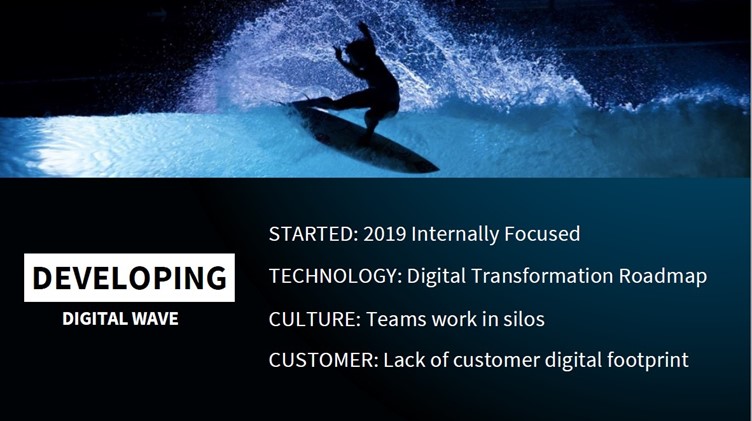
The Quickening Wave
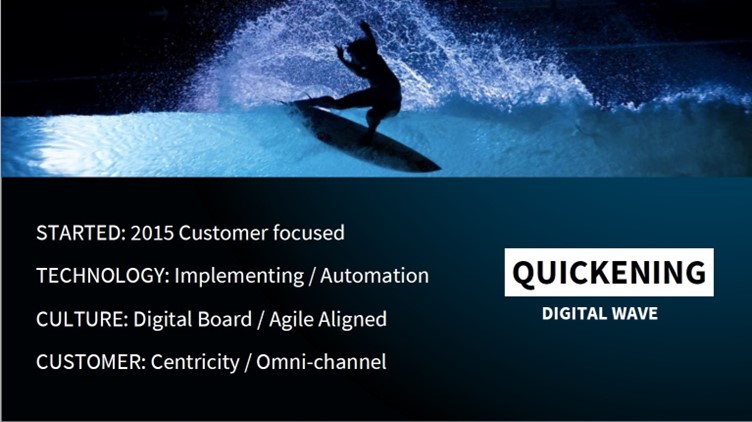
The Crest Wave
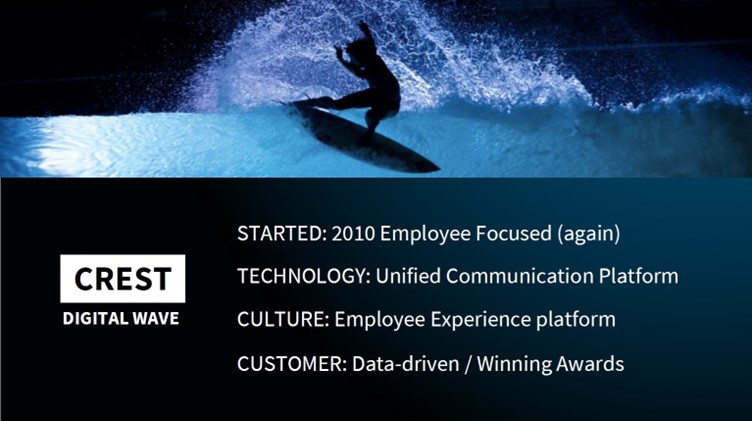
The acceleration of the Developing and Quickening waves is why we need to shift our mindset to be future thinking.
To explain this further, we need to look at a couple of different ways of looking at the world.
One of the most influence scenario planning tools that helps shift organisations from an analogue to digital mindset is:
VUCA
Volatility, uncertainty, complexity and ambiguity
The concept of VUCA to frame the dynamics of change has been around since the end of the 1980s. With the end of the Cold War in sight, the easing of confrontation between two superpowers changed everything, and the US Department of Defense came up with VUCA as a way of describing this new landscape: Volatile, Uncertain, Complex and Ambiguous.
VUCA has since spread to become commonly used in the business world. It has also driven decisions to adopt an agile philosophy and methods, which are by nature adaptive, and suited to the shifting sands that VUCA depicts.
But despite the continuing popularity of the VUCA view, the world has continued to evolve, and a newer vision of the landscape is better suited to where we are today.
BANI
Brittle, anxious, non-linear, incomprehensible
If you haven’t come across BANI before, you’d be forgiven for imagining that it might have evolved since early 2020, when so much changed so suddenly for everyone.
But actually, it was coined as far back as 2016.
In an excellent article published by Jamais Cascio, one of the term’s originators, he unpacks some of the ideas in BANI and relates them to a post-pandemic world.
Here are some of the key take-outs:
While VUCA highlights instability and complexity, BANI relates to situations which go beyond instability into chaos. A world where outcomes are completely unpredictable.
We face change on some many levels. Some of this is change that we are familiar with, but other upheavals are completely disorientating and, above all stressful.
What does BANI really stand for?
Brittle: describes something susceptible to sudden and catastrophic failure. It may be strong, up to a point, but reach that breaking point and ‘snap’. Cascio describes brittleness as ‘illusory strength’. It appears strong, and may even signal strength right up to the point of breaking, but lacks resilience. In terms of systems, brittle often results from relying solely on a single resource (or source of profit), and from lack of capacity or slack in a system.
Anxious: anxiety carries an assumption of helplessness; that every choice we make will be the wrong one, or that we have no choice at all. In an anxious world, we’re waiting to see what disaster hits us next (the term Permacrisis was chosen as the Collins Dictionary 2022 word of the year). Anxiety can make us detach, or become passive, so as to avoid having to make a choice. It can morph into despair, and it can manifest as that deep, dark fear that, whilst we personally can do nothing, the people we rely on will make very bad decisions indeed.
Information may be a vital commodity, but too much of it can cause a problem. Anxiety is often stoked by the media, who focus on headlines over accuracy. Fake news, trolling, misinformation…Cascio talks about the impact of our media environment and how it drives us to respond. It makes interesting, if rather alarming reading.
Nonlinear: refers to a world where cause and effect appear to be disproportionate or disconnected. Small decisions result in huge consequences (whether intended or not, positive or negative), or, on the flip side, huge amounts of effort result in very little impact.
Incomprehensible: Much of this cause and effect is simply impossible to understand, so the acronym ends with incomprehensible. We can’t grasp events or decisions and even if we find answers, they make no sense. We’ve all been there, asking ourselves, “How did that happen? What the heck did they do that for? Who thought that was a good idea?”
Even in the age of data, the extra information doesn’t guarantee we will understand the situation, and can actually result in information overload.
This might all sound a bit worrying and negative, and maybe that’s because it accurately reflects where we are right now. The situation we are in isn’t a temporary blip, it’s a new phase – the way things are.
What does being in a BANI world mean for digital leaders?
If we return to the idea of the digital waves, and look at them in a BANI context, we can start to see how this nature of change needs to impact on our approach to digital transformation.
To be a digital superhero you’ll need to embrace the idea that effective digital leadership is never about doing it once. It takes commitment to continuous effort, a never-ending push that involves challenging your team to upset the status quo in pursuit of better ways of working.
Effective digital leaders are also good communicators, who value creativity and the willingness to stick your head above the parapet and challenge established processes. They are on a constant journey of exploration, searching for new ways to exploit technology and use analytics to understand how to provide better service to customers, support suppliers and partners and build a more sustainable organisation.
If this sounds like I’m throwing down a challenge, it’s because it is challenging!
But in a BANI world, following my 5-steps will ensure your effectiveness as a digital leader.
- Always keep your finger on the pulse of industry trends
- Ensure you define and communicate a clear vision across the organisation
- Make sure that you are a digital agent of change at the helm
- Develop a customer-based strategy
- Use data-driven analysis
True digital leaders understand that, whilst they may be a driving force behind change, success transformation can only happen if the company culture supports it, and encourages everyone within the organisation to play their part.
Ready to produce game-changing digital results in your business?
Subscribe to receive cutting edge insights on digital leadership and transformation- straight to your inbox
We do not sell or share your information with anyone.



